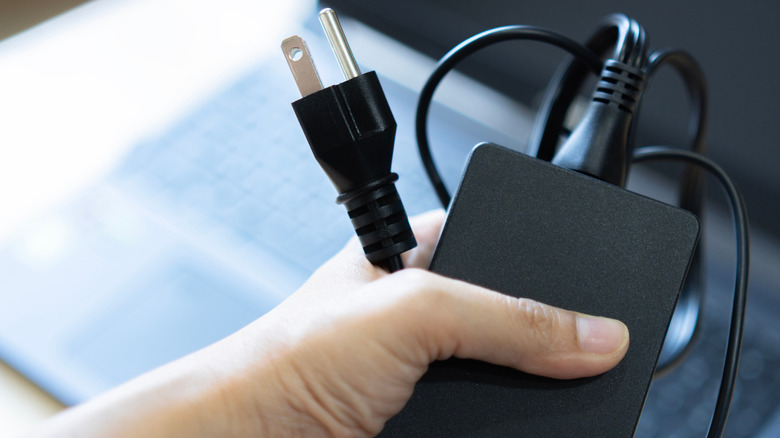Here's How Much Electricity Your Computer Is Using (Even When It's Off)
Have you ever noticed a creeping increase in your monthly electricity bill? It can be challenging to pin down the cause, because there are a number of devices (some of which you wouldn't expect), that can be responsible. One of the most obvious culprits when looking at sudden increases in utility costs is your home's heating and air conditioning system. This is one of the reasons many people have switched to smart thermostats that promise to lower your energy bill.
Computers can also consume quite a bit of energy when in use. For instance, an active laptop can pull 60 watts, and a desktop more than 500 watts for gaming rigs. Did you know that even when your PC is shut down, if It's still plugged in, it's drawing wattage? One individual (via Reddit) measured their PC's power draw and discovered, "This 10-year-old machine draws around 4.5 watts while shut down but plugged in."
How much do PCs cost to run?
Exact calculations are difficult to pin down because there are some variables which affect energy costs. For example, as you might expect, a beefy gaming rig running one of the most powerful desktop processors and an Nvidia RTX 5090 GPU (which can pull up to 562 watts by itself), will draw a lot more power and be more expensive to run than something like a Vivobook designed for word processing and web browsing.
In addition, usage is a significant factor in determining the cost to operate these devices. The number of hours a day in use, whether you have enabled energy saving features, and how much active time is spent using demanding software. Think 3D video editing versus typing up a document.
Also, keep in mind energy prices vary per state with rates as low as North Dakota's 10.20 cents up to Hawaii's 42.69 cents per kilowatt-hour, according to EIA.gov. A test using a Kill-A-Watt meter performed by PCMag.com, found one user's PC used 11.02 kilowatt-hours per week (web browsing, documents, and light gaming), that when multiplied by the energy costs in their local San Diego area, worked out to be around $4.51 per week and $234.94 per year.
What can you do to lower your PCs power draw?
Sometimes, you may think the PC is turned off when, in fact, it's not. For example, do you know the difference between sleep vs. hibernate in Windows? There are several things you can do to help reduce your computer's energy consumption. For instance, you might want to disable your screen saver, as this prevents the machine from going into sleep mode, which powers down some components.
You can also unplug your computer, laptop charger, and any peripherals in use. One simple solution for powering equipment down quickly is to utilize an outlet strip for your PC, which features a power button you can switch off. However, make sure to shut down your computer prior to cutting its power.
You can also lower your PC's power draw by utilizing built-in power save options, which lower display brightness, optimize processing performance, and by activating features like energy saver, which disables unnecessary background processes to save on power.


